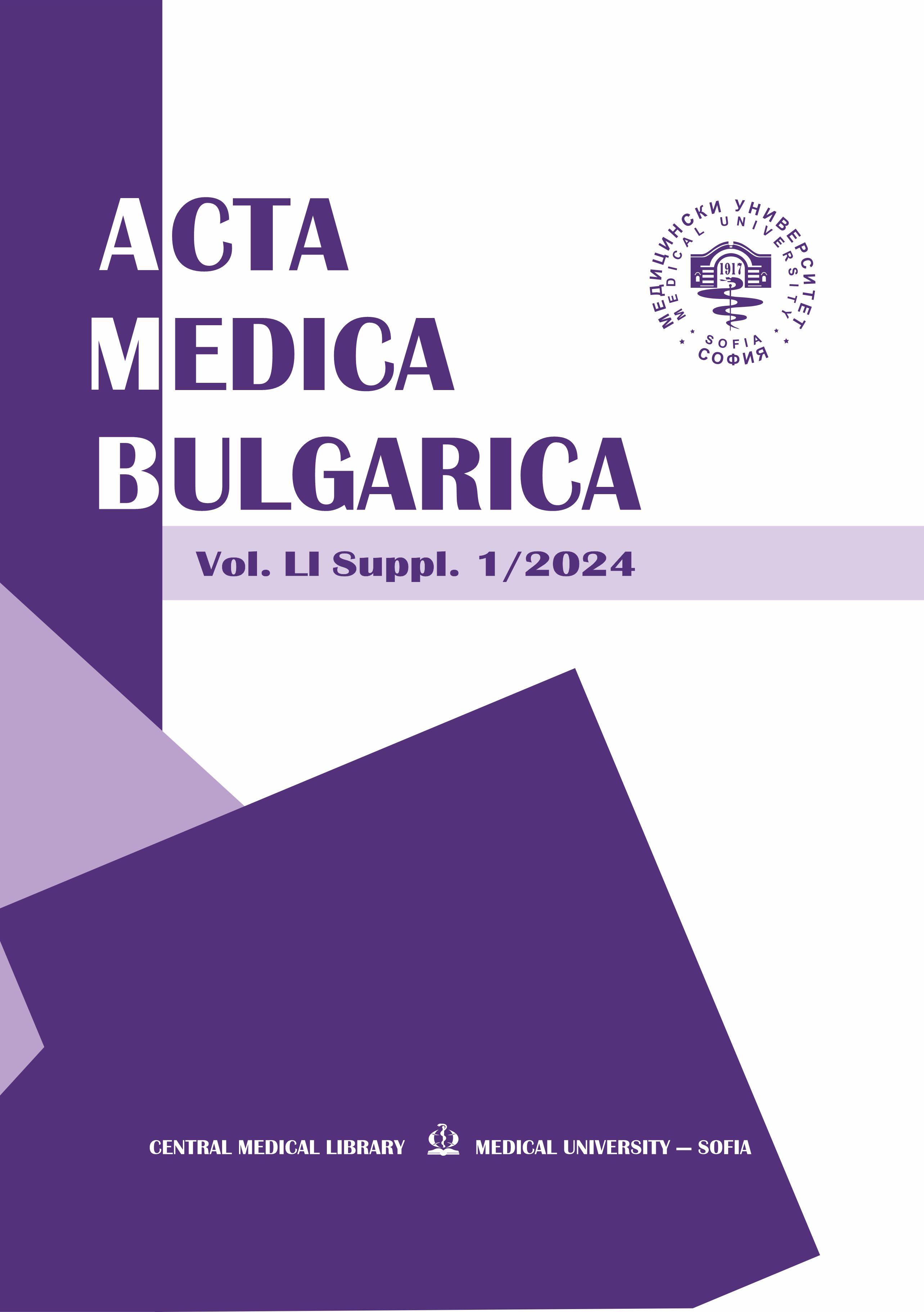Penetrating keratoplasty in children
DOI:
https://doi.org/10.2478/AMB-2024-0029Keywords:
pediatric keratoplasty, penetrating keratoplasty, trauma, corneal perforationAbstract
Кeratoplasty is one of the most common tissue transplants. However, its application in children remains a high-risk procedure. The child eyeball is smaller, the cornea and sclera are more elastic, a higher pressure on the vitreous body and often other malformations of the anterior eye segment are present, all of which makes it a significantly more difficult intervention than that in adults. The aim of the report is to present a case of keratoplasty in a child with corneal perforation due to trauma. A 7-year-old child, who fell off a bicycle 4 days ago and hit their eye area, was admitted to the eye diseases clinic. In the clinic, an examination was performed under general anesthesia; a foreign body was removed from the left eye and a perforation of the cornea was established. A penetrating keratoplasty was performed. Two months after the surgery, loosening of the sutures began, and scarring and their gradual removal became necessary. 18 months after the operation, the eye is completely calm and the transplant is transparent. Penetrating keratoplasty in children remains a major challenge for most surgeons. A good collaboration with the parents is necessary to preserve the transparency of the transplant and improve visual acuity.
References
O’Hara MA, Mannis MJ. Pediatric penetrating keratoplasty. Int Ophthalmol Clin. 2013;53(2):59-70. doi:10.1097/
IIO.0B013E3182782A4B
Shi W, Jin H, Li S, et al. Indications of paediatric keratoplasty in north China. Clin Exp Ophthalmol. 2007;35(8):724-727.
doi:10.1111/J.1442-9071.2007.01618.X
Chan AS, Colby K. Update on pediatric keratoplasty. Int Ophthalmol Clin. 2008; 48(2):25-33. doi:10.1097/
IIO.0B013E3181694901
Stulting RD, Sumers KD, Cavanagh HD, et al. Penetrating Keratoplasty in Children. Ophthalmology. 1984;91(10):1222-
doi:10.1016/S0161-6420(84)34171-9
Limaiem R, Chebil A, Baba A, et al. Pediatric Penetrating Keratoplasty: Indications and Outcomes. Transplant Proc. 2011; 43(2): 649-651. doi:10.1016/J.TRANSPROCEED.2011.01.055
Huang C, O’Hara M, Mannis MJ. Primary pediatric keratoplasty: Indications and outcomes. Cornea. 2009;28(9):1003-
doi:10.1097/ICO.0B013E3181A186C0
Vanathi M, Panda A, Vengayil S, et al. Pediatric Keratoplasty. Surv Ophthalmol. 2009;54(2):245-271. doi:10.1016/J.SURVOPHTHAL.2008.12.011
Waring GO, Laibson PR. Keratoplasty in infants and children. Trans Sect Ophthalmol Am Acad Ophthalmol Otolaryngol. 1977;83(2):283-296. http://europepmc.org/abstract/MED/195377
Dana MR, Schaumberg DA, Moyes AL, et al. Outcome of Penetrating Keratoplasty After Ocular Trauma in Children. Archives of Ophthalmology. 1995;113(12):1503-1507.
doi:10.1001/ARCHOPHT.1995.01100120033003
Cowden JW. Penetrating Keratoplasty in Infants and Children. Ophthalmology. 1990;97(3):324-329. doi:10.1016/
S0161-6420(90)32586-1
Majander A, Kivelä TT, Krootila K. Indications and outcomes of keratoplasties in children during a 40-year period. Acta Ophthalmol. 2016;94(6):618-624. doi:10.1111/AOS.13040
Vassileva PI, Kirilova Y, Hergeldzhieva-Fileva T. Amniotic Membrane Transplantation For Persistent Corneal Epithelial
Defects And/or Graft Rejection After Penetrating Keratoplasty. Invest Ophthalmol Vis Sci. 2011;52(14):5162-5162.
Velásquez-Monzón K, Navarro-Peña MC, Klunder-Klunder M, et al. Pediatric penetrating keratoplasty and graft rejection: experience at the Hospital Infantil de México Federico Gómez. Bol Med Hosp Infant Mex. 2020;77(1):23-27.
doi:10.24875/BMHIM.19000070
Sun Y, Lin Q, Song P, et al. Clinical Analysis of Repeat Penetrating Keratoplasty in Children. J Clin Med. 2023;12(9):3346.
doi:10.3390/JCM12093346
Downloads
Published
Issue
Section
License
Copyright (c) 2024 G. Balchev, C. Balabanov, S. Murgova (Author)

This work is licensed under a Creative Commons Attribution-NonCommercial-NoDerivatives 4.0 International License.
You are free to share, copy and redistribute the material in any medium or format under these terms.


 Journal Acta Medica Bulgarica
Journal Acta Medica Bulgarica 